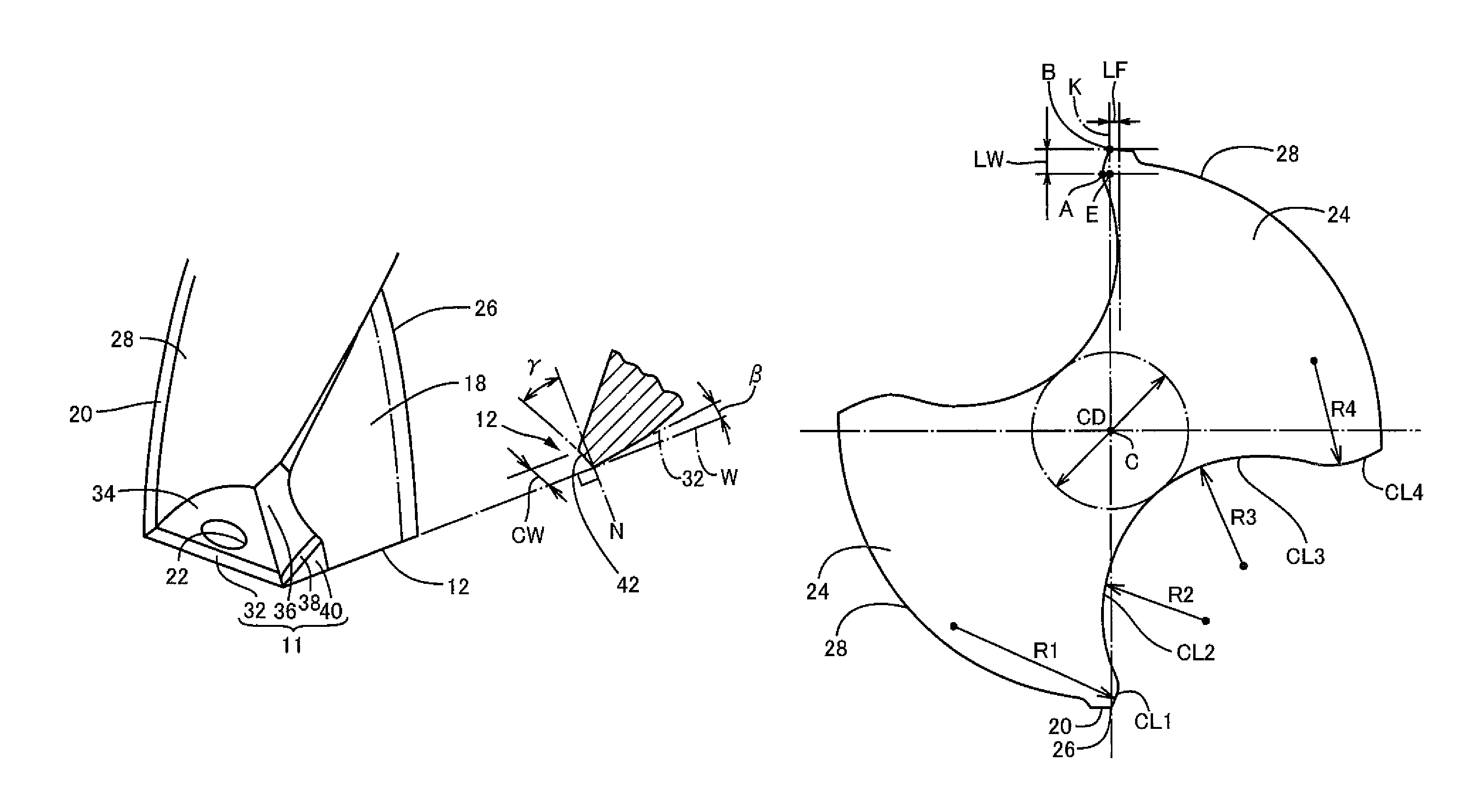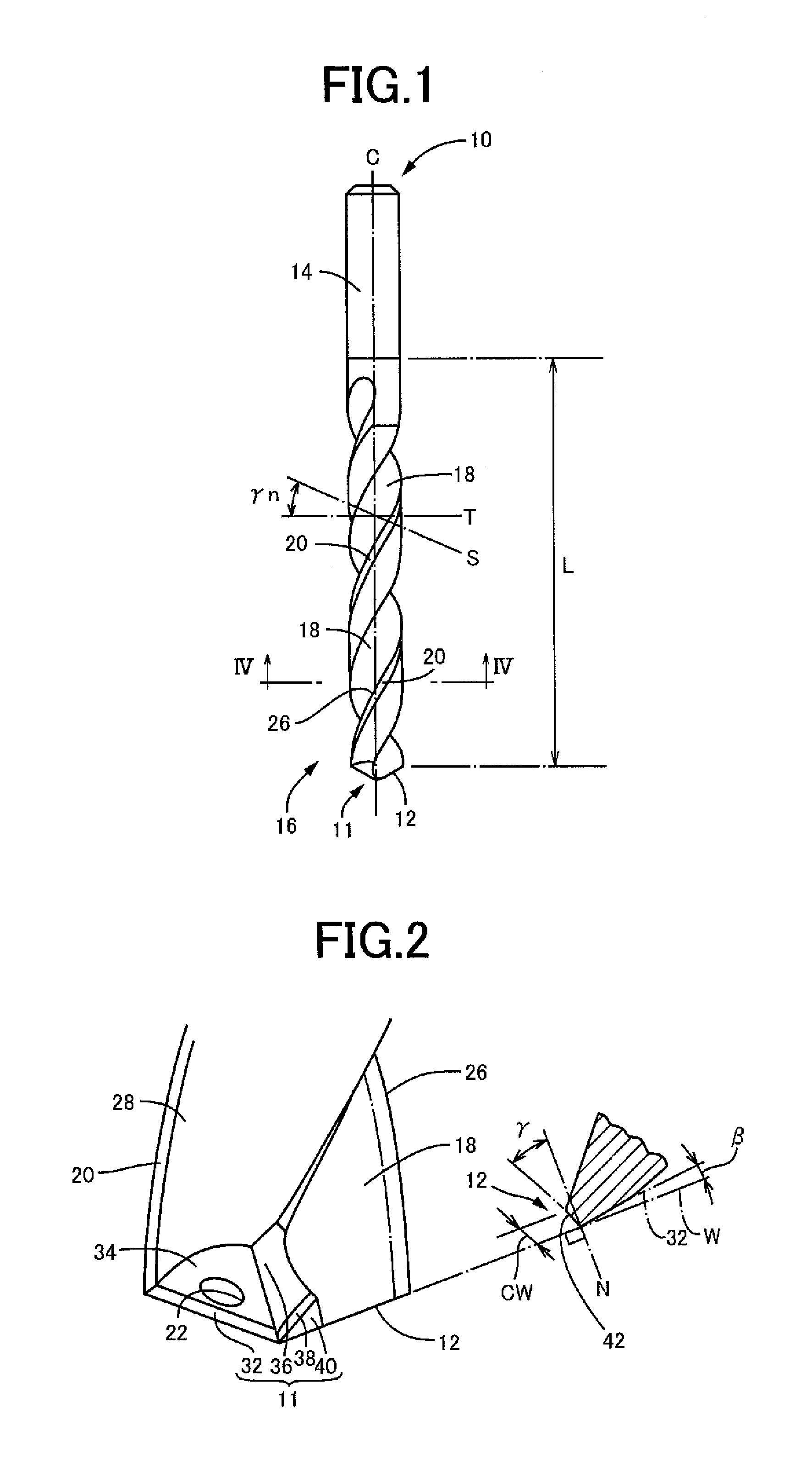Drill
a drill and hammer technology, applied in the field of drills, can solve the problems of reducing the durability of drills and the large resistance applied to drills, and achieve the effects of reducing cutting resistance, increasing wear on the flanks, and suppressing drill breaker
- Summary
- Abstract
- Description
- Claims
- Application Information
AI Technical Summary
Benefits of technology
Problems solved by technology
Method used
Image
Examples
example
[0048]FIG. 1 is a diagram of a drill 10 that is an example of the present invention and is a front view from a direction orthogonal to an axial center C. FIG. 2 is an enlarged view of a tip portion disposed with a cutting edge 12 of the drill 10. FIG. 3 is an enlarged view of a tip surface disposed with the cutting edge 12 of the drill 10. FIG. 4 is a cross-sectional view of the drill 10 cut along a surface orthogonal to the axial center C. FIG. 5 is an enlarged view of an end edge portion of an inner wall surface of a chip discharge flute 18 on a drill rotation direction side in the cross-sectional view. FIG. 6 is an enlarged perspective view of a tip portion of the drill 10.
[0049]The drill 10 is a two-flute twist drill for cutting special steel that is relatively difficult-to-machine material such as stainless steel, alloy steel, and titanium alloy with efficiency and axially integrally includes a shank portion 14 and a flute portion 16. The drill 10 is made of cemented carbide, a...
PUM
| Property | Measurement | Unit |
|---|---|---|
| orthogonal clearance angle | aaaaa | aaaaa |
| cutting edge chamfer angle γof | aaaaa | aaaaa |
| orthogonal clearance angle | aaaaa | aaaaa |
Abstract
Description
Claims
Application Information
 Login to View More
Login to View More - R&D
- Intellectual Property
- Life Sciences
- Materials
- Tech Scout
- Unparalleled Data Quality
- Higher Quality Content
- 60% Fewer Hallucinations
Browse by: Latest US Patents, China's latest patents, Technical Efficacy Thesaurus, Application Domain, Technology Topic, Popular Technical Reports.
© 2025 PatSnap. All rights reserved.Legal|Privacy policy|Modern Slavery Act Transparency Statement|Sitemap|About US| Contact US: help@patsnap.com



